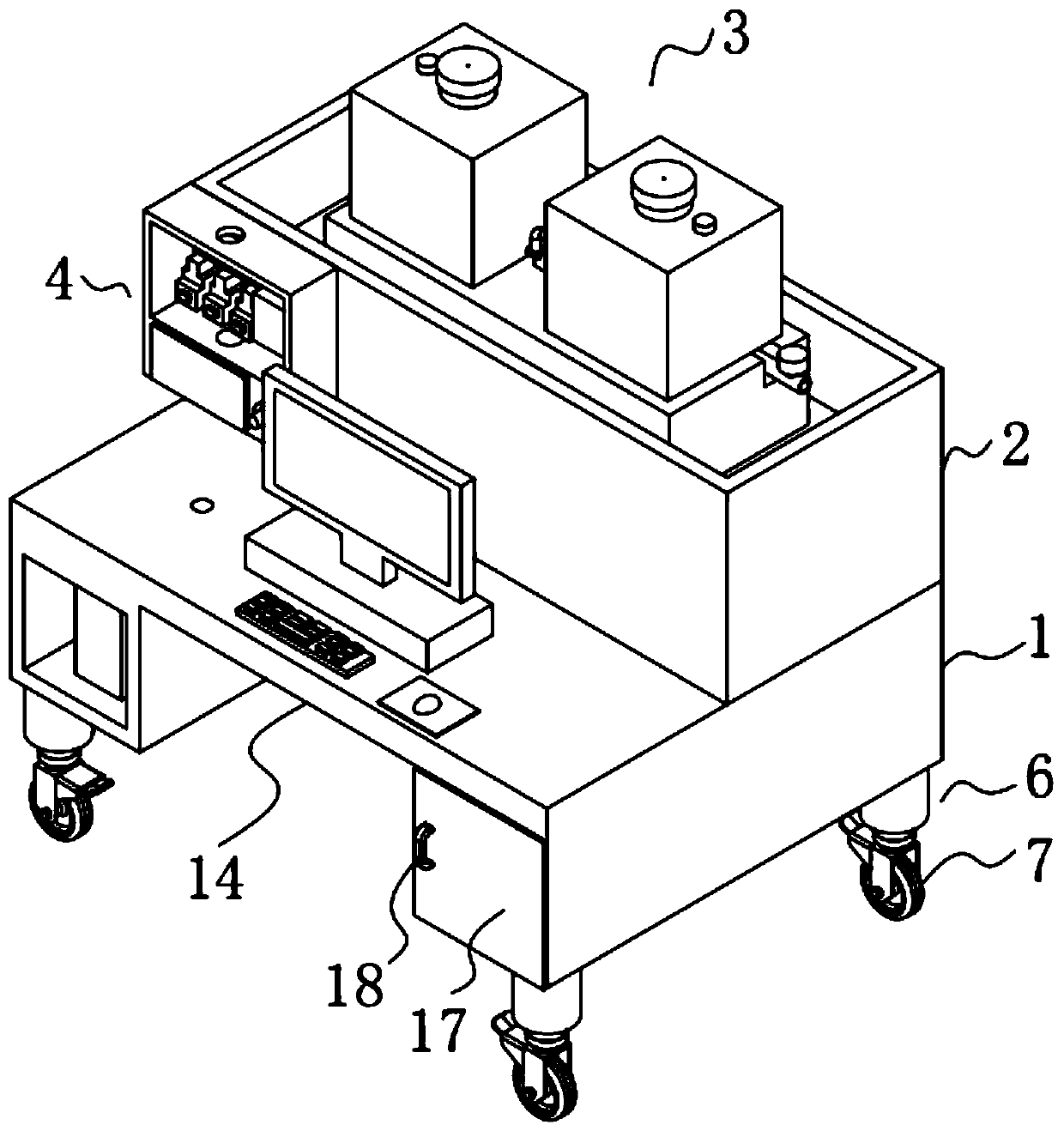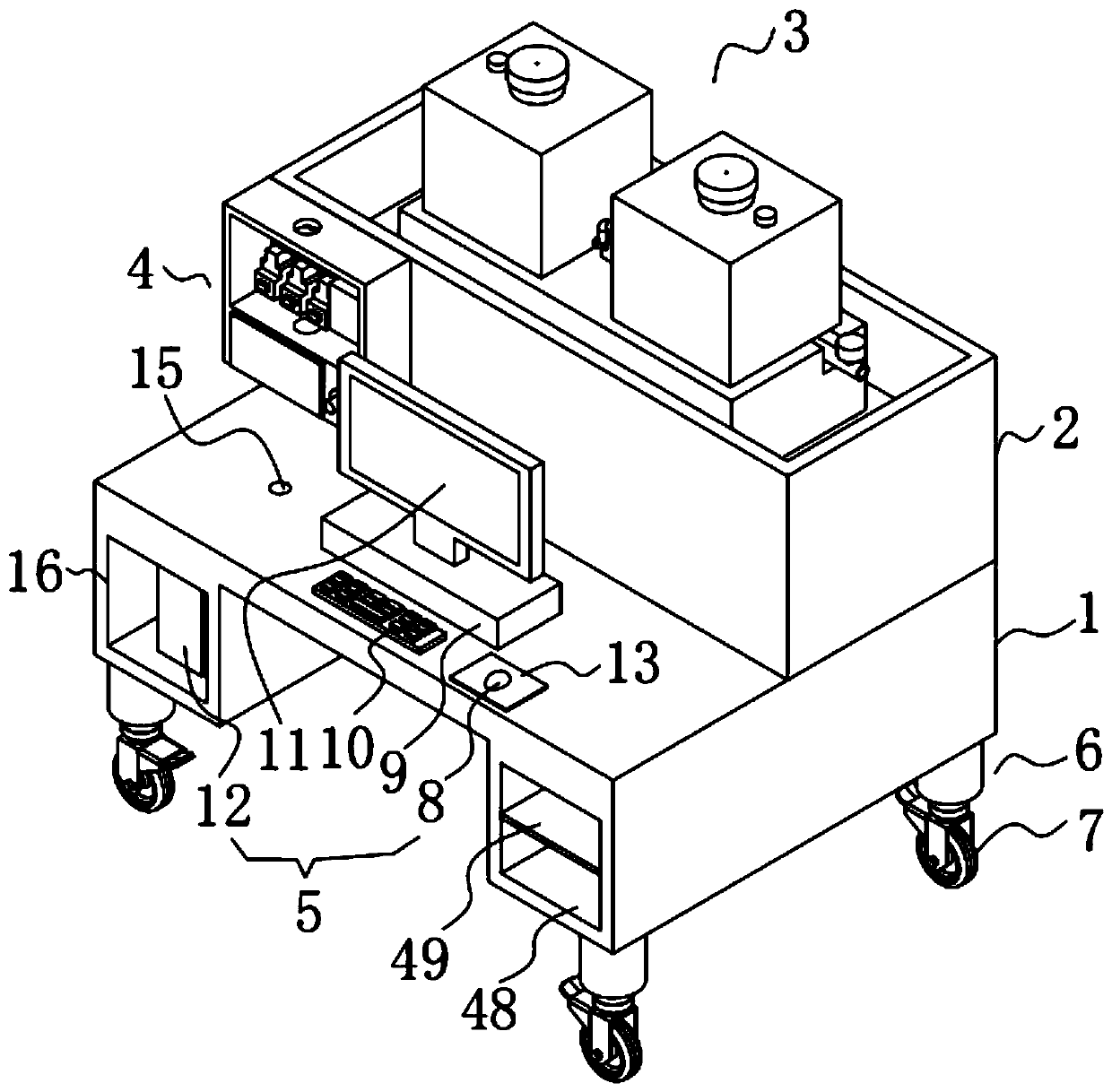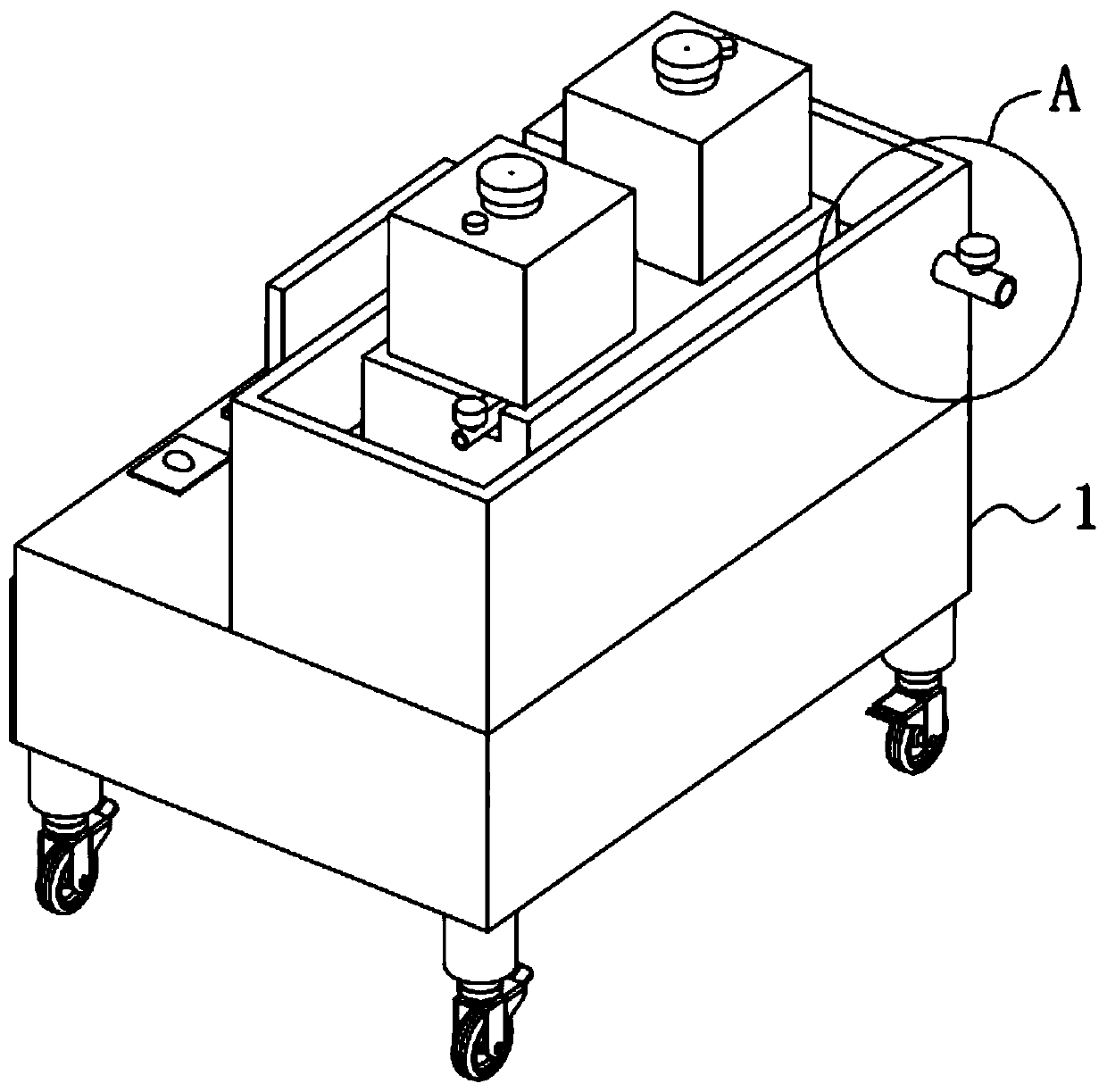Experimental practical training integrated device for electrical automation teaching
An electrical automation and experimental technology, applied in the field of electrical automation, can solve problems such as single function, inability to improve students' operational skill level for installation, wiring and debugging of electrical equipment, and unstable operation
- Summary
- Abstract
- Description
- Claims
- Application Information
AI Technical Summary
Problems solved by technology
Method used
Image
Examples
Embodiment 1
[0053] A comprehensive device for electrical automation teaching experiment training, such as Figure 1-3 As shown, a support platform 1 is included, and the upper part of the support platform 1 is provided with a storage tank 2 near its rear edge, and the inside of the storage tank 2 is provided with an experimental training unit 3, and the storage tank 2 is close to the A control unit 4 is provided on the outer wall of the front portion of the support platform 1, and a programming unit 5 is also provided on the top of the support platform 1 near its front edge, and the control unit 4 is connected to the experimental training unit 3 and the training unit 3 respectively. The programming unit 5 is electrically connected.
[0054] By adopting the above-mentioned technical scheme, the supporting platform 1 is used as the basic support for installing the whole device, and the experimental training unit 3 is used for teachers to guide students to install and debug electrical equipm...
Embodiment 2
[0075] The difference from Example 1 is that the surface of the holding tank 2 is also provided with a protective layer, and the protective layer is prepared by the following method:
[0076] Take the following raw materials and weigh them by weight: 18 parts of epoxy resin, 8 parts of polyvinyl alcohol, 10 parts of copper oxide powder, 12 parts of nano-silver powder, 8 parts of mica powder, 15 parts of polyurethane, 13 parts of acrylic emulsion, 12 parts of alcohol ester 2 parts, 2 parts of triethanolamine, 1 part of emulsified silicone oil and 30 parts of ethanol;
[0077] S1. Add the weighed acrylic emulsion, alcohol ester dodeca, triethanolamine, emulsified silicone oil and ethanol into the mixer and stir for 24min at a stirring speed of 600r / min to prepare a mixed solution;
[0078] S2, adding epoxy resin, polyvinyl alcohol, copper oxide powder, nano-silver powder, mica powder and polyurethane into a pulverizer for pulverization until the particle diameter of the material...
Embodiment 3
[0084] The difference with embodiment 2 is the preparation of protective layer, and its specific preparation method is as follows:
[0085] Take the following raw materials and weigh them by weight: 22 parts of epoxy resin, 10 parts of polyvinyl alcohol, 11 parts of copper oxide powder, 14 parts of nano-silver powder, 9 parts of mica powder, 18 parts of polyurethane, 14 parts of acrylic emulsion, alcohol ester twelve 3 parts, 3 parts of triethanolamine, 2 parts of emulsified silicone oil and 40 parts of ethanol;
[0086] S1. Add the weighed acrylic emulsion, alcohol ester dodeca, triethanolamine, emulsified silicone oil and ethanol into the mixer and stir for 27min at a stirring speed of 650r / min to prepare a mixed solution;
[0087] S2, adding epoxy resin, polyvinyl alcohol, copper oxide powder, nano-silver powder, mica powder and polyurethane into a pulverizer for pulverization until the particle diameter of the material is not greater than 100nm to obtain a mixed powder mat...
PUM
 Login to View More
Login to View More Abstract
Description
Claims
Application Information
 Login to View More
Login to View More - R&D
- Intellectual Property
- Life Sciences
- Materials
- Tech Scout
- Unparalleled Data Quality
- Higher Quality Content
- 60% Fewer Hallucinations
Browse by: Latest US Patents, China's latest patents, Technical Efficacy Thesaurus, Application Domain, Technology Topic, Popular Technical Reports.
© 2025 PatSnap. All rights reserved.Legal|Privacy policy|Modern Slavery Act Transparency Statement|Sitemap|About US| Contact US: help@patsnap.com



